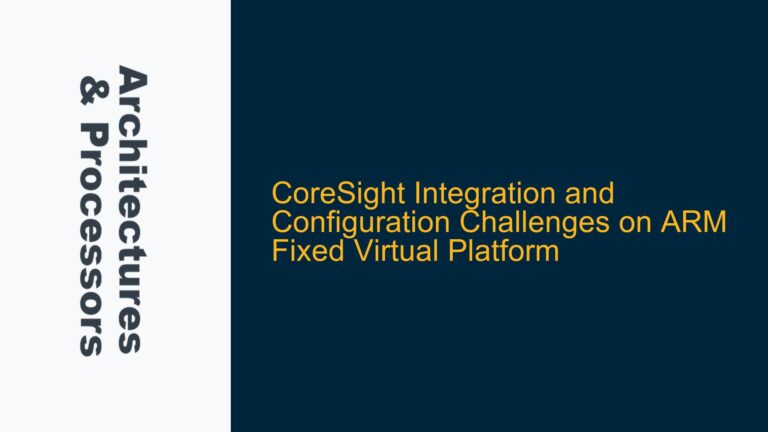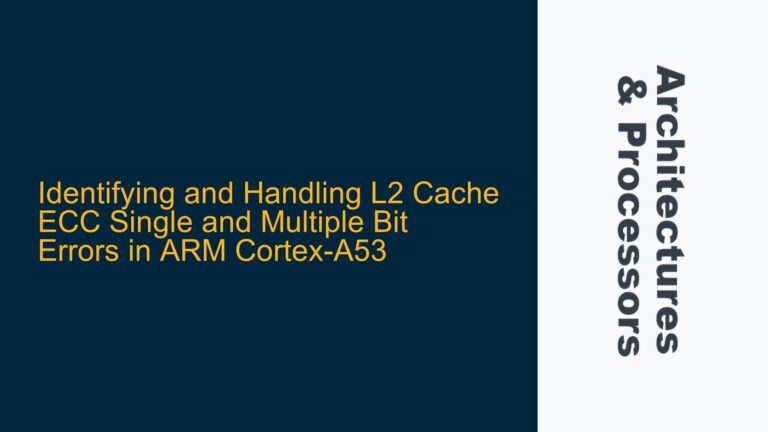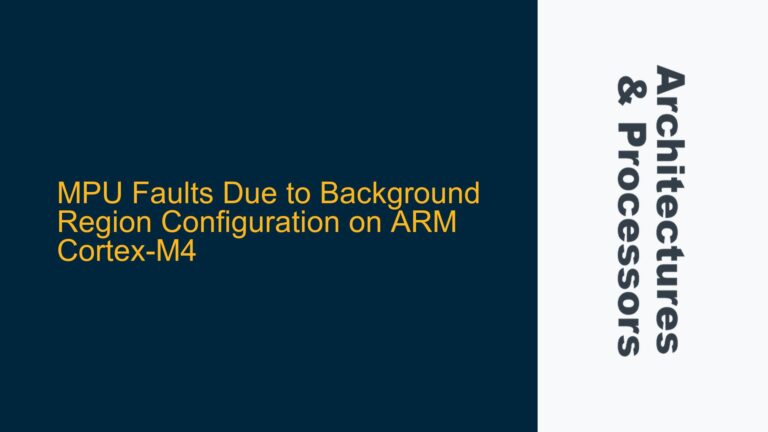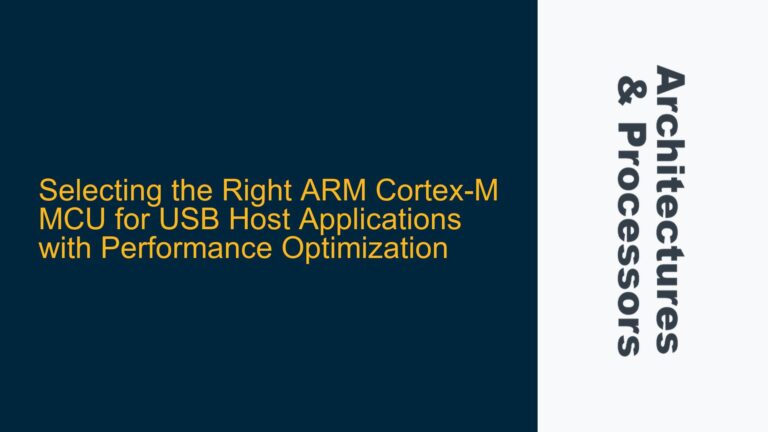ARM Cortex-A Series SoC Requirements for Android Compatibility
When designing an embedded device with a small display that leverages Android for Human-Machine Interface (HMI) applications, the selection of an appropriate System-on-Chip (SoC) is critical. Android, as an operating system, imposes specific hardware requirements that must be met to ensure smooth operation. The Android Open Source Project (AOSP) typically requires a minimum of a Cortex-A series processor, as Cortex-M series processors lack the necessary features such as a Memory Management Unit (MMU) and sufficient computational power to run the Android OS efficiently.
The Cortex-A series processors are designed for applications requiring high performance and complex operating systems like Android. These processors support features such as virtual memory, multi-threading, and advanced power management, which are essential for running Android. However, not all Cortex-A series processors are created equal. The specific requirements for running Android include a minimum clock speed, RAM, and storage capacity. For instance, Android 10 requires at least a 1.5 GHz Cortex-A7 processor, 1 GB of RAM, and 8 GB of storage. These requirements can vary depending on the version of Android and the specific use case.
In addition to the CPU, the GPU plays a significant role in rendering the graphical user interface (GUI) of Android applications. A capable GPU is necessary to handle the rendering of complex UIs and animations, especially for devices with small displays where pixel density is high. The Mali series of GPUs from ARM are commonly integrated into Cortex-A series SoCs and provide the necessary performance for Android applications.
Memory bandwidth and latency are also critical factors in selecting an SoC for Android. The AMBA AXI bus protocol, commonly used in ARM-based SoCs, must be configured to handle the high data throughput required by Android applications. The AXI bus fabric should be optimized to minimize latency and maximize bandwidth, ensuring that data can be transferred efficiently between the CPU, GPU, and memory.
Challenges in Finding Low-End SoCs with Android Support
One of the primary challenges in finding a low-end SoC that supports Android is the trade-off between performance and cost. High-performance SoCs, such as those used in smartphones, often come with a wide range of features and peripherals that are unnecessary for simple embedded devices. These features increase the cost and power consumption of the SoC, making them unsuitable for low-cost, low-power applications.
Another challenge is the lack of support for Android on low-end SoCs. Many low-end SoCs are designed for applications that do not require a full-fledged operating system like Android. These SoCs often lack the necessary hardware features, such as an MMU or a capable GPU, to run Android efficiently. Additionally, the software support for Android on these SoCs may be limited, with few or no drivers available for the peripherals required by the Android OS.
The integration of Android on a low-end SoC also presents challenges in terms of system design and verification. The Android OS requires a specific set of hardware features and peripherals, such as a display controller, touchscreen interface, and audio codec. These peripherals must be integrated into the SoC and verified to ensure compatibility with Android. The verification process can be complex, requiring extensive testing of the hardware and software to ensure that the system meets the performance and stability requirements of Android.
Strategies for Implementing Android on Low-End ARM SoCs
To implement Android on a low-end ARM SoC, several strategies can be employed to overcome the challenges mentioned above. The first step is to select an SoC that meets the minimum hardware requirements for Android. This includes a Cortex-A series processor with a clock speed of at least 1.5 GHz, 1 GB of RAM, and 8 GB of storage. The SoC should also include a capable GPU, such as a Mali GPU, to handle the rendering of the Android UI.
Once an appropriate SoC has been selected, the next step is to optimize the system design for low power consumption and cost. This can be achieved by carefully selecting the peripherals and features that are necessary for the application and omitting those that are not. For example, if the device does not require a high-resolution display, a lower-resolution display controller can be used to reduce power consumption and cost.
The integration of Android on the SoC requires careful attention to the hardware and software interfaces. The Android OS must be configured to work with the specific hardware features of the SoC, including the display controller, touchscreen interface, and audio codec. This may require custom drivers or modifications to the Android kernel to ensure compatibility with the SoC.
The verification process for an Android-based embedded device is critical to ensuring the stability and performance of the system. This includes testing the hardware and software to ensure that the system meets the performance requirements of Android. The verification process should include stress testing of the CPU, GPU, and memory to ensure that the system can handle the demands of Android applications. Additionally, the system should be tested for compatibility with the Android OS, including the bootloader, kernel, and user-space applications.
In conclusion, implementing Android on a low-end ARM SoC requires careful consideration of the hardware and software requirements of the Android OS. By selecting an appropriate SoC, optimizing the system design, and thoroughly verifying the hardware and software, it is possible to create a low-cost, low-power embedded device that leverages the power of Android for HMI applications.






